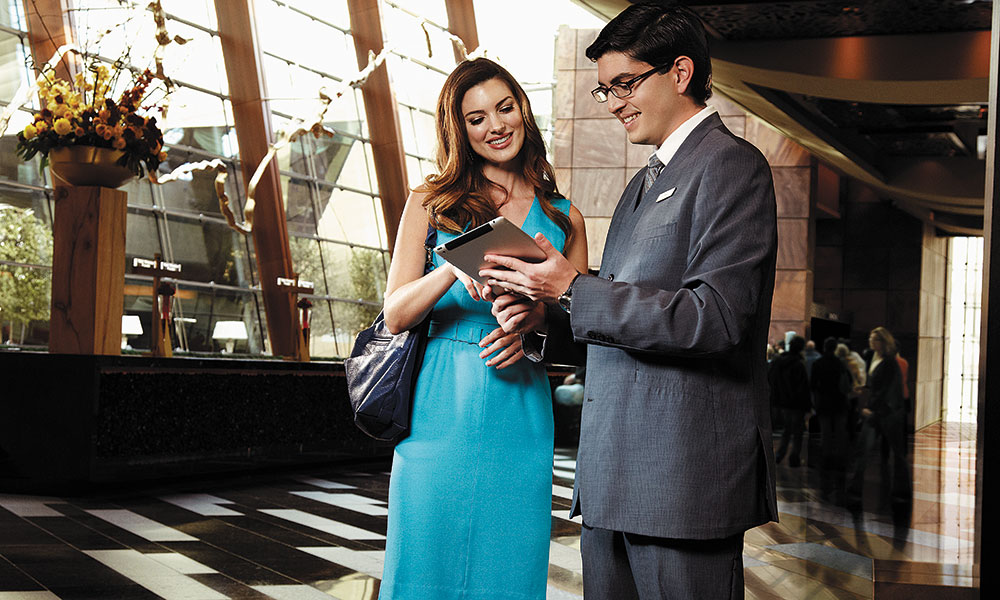
Can Tracking Technology Improve Your Meeting?
Beacon, RFID, NFC— here’s what you need to know to make the most of tracking tech.
You’ve heard the buzz about beacon, RFID, and NFC. Should you consider implementing these tracking technologies into your next conference to provide a better experience for attendees?
David Haas, director of technology solutions for FreemanXP, says these technologies can be expensive, but RFID—considered the granddaddy of tracking technologies—tracks with 90 percent accuracy, which can be infinitely informative to planners.
[yellow-circle footer=”The accuracy rate of RFID technology.”]90%[/yellow-circle]
“For example, you can track how long a certain type of doctor stays on the show floor,” he says. To offset the cost of readers that scan badges, some associations secure sponsors, whose logos are prominent at each portal. NFC is another form of wireless communication, similar to RFID, but used for very short-range communications—such as a device and an NFC-enabled tag. NFC badges can be preloaded with information, such as an attendee’s contact information, social networks, session selection, and special event access. The microchip can do everything from track attendance to manage meal payment.
Beacon technology, available for Apple or Android, is used to send information back and forth—think about retailers that push coupons to your smartphone as you pass a store. Similarly, it senses when attendees walk by a booth and can track attendance based on attendees’ proximity to beacons in the room.
CES, the International Consumer Electronics Show, first used beacon technology in 2014 for an attendee scavenger hunt. In 2015, it greatly expanded its use to map out the entire show floor and provide beacon-based navigation. The technology offered exhibitors new promotional and sponsorship packages and other additional value.
“If there’s an incentive for people to use beacon technology, maybe it’ll increase,” Haas says. “But for now it’s mostly for push messaging.” If you walk into a meeting, it pushes out a welcome message, or it directs nearby attendees to a sponsor booth on the show floor. “For the sponsor it’s great, but is the attendee really motivated to use it?” Haas asks. He recommends providing that motivation by ensuring messages are hyper-localized and personalized to the individual. For instance, if the app could automatically check attendees in to an educational session (and show they stayed the full hour), attendees might benefit more from the technology. “These kinds of applications are coming,” he says, “but are not 100 percent there yet.”




